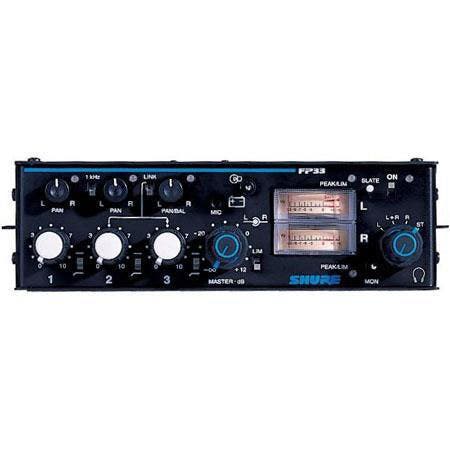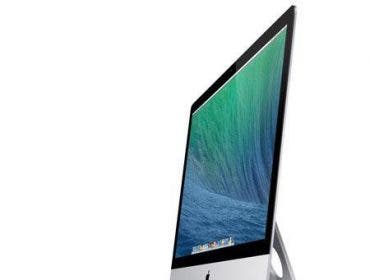Any search for a mixer starts with one question: What are you going to use it for?
By Kristin Pinell & Kurt Reil
Mixers all basically do the same thing. They allow control over multiple signals (voices, instruments ,or tracks), being sent to either a live PA system or for recording and mixing purposes. Their features vary greatly depending on the application(s) they were designed for.
We’ve put together some guidelines on what to look for when buying a live mixer, what’s available, including an overview of some popular models and their features.
For the Videographer
Capturing the full range of sound at a live event may require more than one mic. You’ll soon be looking for ways to control your mic levels.
Semi-pro or pro videographers needing more inputs and greater signal control in capturing sound at live events, indie film or documentary productions can opt for Azden’s Professional Field Mixer FMX series. Very reasonably priced between $235-$540, these models include enhanced features, like:
-
Balanced XLR inputs and line level outputs for more gain and less noise
-
Headphone monitoring and volume control
-
High quality limiters to protect against overload distortion
-
Built-in phantom power for condenser microphones
-
LEDs for peak level monitoring, power and battery condition
These are all portable, battery powered units and depending on the individual model may have additional 12V DC power.
Shure also manufactures a line of high-quality portable mixers for remote audio recording and field production. The Shure FP33 3-Channel Stereo Mixer, at $1,274.95, provides exceptional low noise and wide dynamic range. It also has the ability to expand by linking with additional FP33s or an external mixer adding even more control and flexibility.
For the DJ
If you’re looking to get the crowd on its feet and keep them dancing, you’ll need a mixer designed to not only handle DJ tasks but to let you have some sonic fun.
Entry to mid-level DJ mixers have the basics to help you entertain a crowd at a nightclub or a social event. They have a minimum of 2 channels to connect your audio devices (turntables, microphones, cd players). With a headphone jack, crossfaders and some EQ or effects you’ll be able to get the music pumping.
As you get into the more high-end units these mixers come with all kinds of performance enhancing effects so the DJ can really show off their own mixing style. Some even let you interface with software applications for added control or display devices for synchronizing visual effects.
The Pioneer DJM Pro DJ Mixing line offers pro quality sound and a host of cool features for the creative DJ. The DJM-750 4-Channel Full Digital Mixer is a 4-channel portable mixer for either the DJ booth or stage. It’s packed with effects starting with Pioneer’s groundbreaking Effect Frequency Filter, which allows the DJ to limit the frequency bands subjected to effects and includes Sound Color FX, and Beat FX, which can be simultaneously controlled by the DJ using Boost Color. Beat FX has been enhanced with a new settings, Vinyl Brake and an improved Roll.
The DJM-750 inherits the same 32-bit digital signal processor that first appeared in its DJM-900nexus to suppress digital noise. A 24-bit A/D converter digitizes and enhances sound quality for all outputs. With the ability to output its performance effects at 96khz/24-bit this mixer will give the serious club DJ really unique and great sounding effects.
For the Singer/Songwriter or Small Venue
Powered Mixers
If you are a solo performing artist or small band playing gigs in coffeehouses or you own a small venue and host frequent performances you might want to consider a “powered” mixer.
Very portable and easy to set up- a powered mixer is a simple all-in-one unit that saves space, setup time and money. These fully integrated units contain a mixer, power amp and effects and generally work well in smaller spaces where a lot of power or volume isn’t necessary. Convenience and ease of use are key.
For the small band or solo artist starting out and looking for equipment that will not break the bank there is the Pyle Pro PMX640BT 6-Channel 600 Watt Bluetooth Powered Mixer ($143.00) The six channel system can stream audio wirelessly via Bluetooth and features independent channel volume, EQ & EFFX controls.
Yamaha has an entire lineup targeted at this space including the Yamaha EMX212S 12-Channel Stereo Power Mixer. The lightweight mixer is designed to be easily stored but durable so that it is suitable for musicians on the road. It has dual 200-watt power amplifiers and it has an internal effects engine that provides a variety of reverb, chorus and delay effects. It has an Adorama price of $369.99
Unpowered Mixers
Though mixers with built-in power amps offer a lot of convenience they really limit the size of the venue you can play in.
You’ll be able to get much more accurate sound reproduction and less distortion at higher volumes using a stand-alone “unpowered” mixer paired with a power amplifier. You can pair your mixer up with whatever size amp you need depending on the room and you won’t be limited by an internal amp.
An entry level PA such as the Rolls R235Steroa 35W Power Amplifier ($188.00) if for the small or home studio and offers a portability at only 4.4 lb and provides solid quily at a low price.
If you are looking to go higher end, Crown Audio most likely has any need you have covered with offerings that range from a few hundred dollars to a few thousand, with increasing functions and capabilities as you move up the line, and in many cases you do not sacrifice portability with their PAs. A middle of the pack offering is the Crown Audio CDi 6000 2100-Watt per channel, 2-channel Power Amplifier ($1,799.00) that features on board digital signal processing with EQ filters, delays and output limiting.
For the Full Live Stage Show
Working with live sound in a large venue with so much happening on stage at one time brings an added complexity to your mixing.
Focus the requirements of your venue, sound system and performers in order to decide on an optimal mixer.
Analog vs. Digital Mixers
Both types of mixers allow you to perform the same basic mixing functions but it’s the big differences in signal processing that effect your workflow.
The strengths of a digital mixer are in a few key features:
-
Programmability
-
Automation and Screen Recall Ability
-
Onboard Effects
-
MIDI capability
-
Multiple routing configurations
-
Lightweight
High prices and overall complexity can be a deterrent for many considering purchasing a digital board. Also the fact that you need time up front to take advantage of all the menu-driven programming features can be limiting in certain situations. But giving a live sound engineer the ability to save the mix configurations of multiple bands at sound checks and recall them all later is a big advantage.
Though all the programmability and features of a digital mixer can be tempting, the appeal of an analog mixer is in its ease of use and lower cost. You are not paying for high-end A/D converters or computer parts that may quickly become obsolete.
Many sound engineers still prefer the “hands-on” feel and flexibility of an analog mixer, especially in a live situation where anything can happen. You can make a quick adjustment with the turn of a knob. Warmth of sound, simplicity and lower cost still drive the market for analog equipment.
Soundcraft, among others, offers a nice 12-channel mixer in the Soundcraft MPMi 12/2 12-Channel Mono + 2-Channel Stereo Analog Mixer at ($499.00) with some digital effects that won’t break the bank.
Looking for a lot more in your mixer an option is the Yamaha MGP32X ($1,399.99), a 32-channel analog mixer that features digital controls. It supports 32 line inputs as well as 6 auxiliary inputs and is designed specifically for live music environments. It features an integrated DSP Hybrid Channel section that includes 3 types of reverb and 16 effects and can even play back music from your iTunes catalog and has an additional USB port that permits users to record their live performance directly to external USB media, as either a stereo WAV or MP3 file.
The Big Kahuna
For those ready to take the leap to a more professional digital mixing platform some manufacturers like PreSonus are building digital boards with a more tactile analog feel.
The PreSonus StudioLive 24.4.2 ($2,995.95) is a 24-channel digital console with integrated firewire computer interface. Boasting a new “analog style” layout with more dedicated controls and less menu-driven displays, it’s designed to be equally useful in the recording studio and as a live sound mixer.
It’s got some great digital features that make it a live powerhouse:
-
Ability to save and recall settings even fader levels
-
Two programmable digital effects processors with an effects library
-
Extremely high quality digital converters for optimal sound
Additionally there are 10 aux sends to control individual stage monitor mixes or zones and it’s expandable. You’ll never be without enough channels because with a simple Firewire cable you can link together up to 4 StudioLive mixers.
Recording Your Gig
Wouldn’t it be great if you could be running your live mix out to the PA and at the same time be recording the whole show on your laptop? Increasingly a number of the mixers have a USB port that enables you to record the event such as the aforementioned Yamaha MGP32X or just with a built-in 24 bit/96khz computer (DAW) interface that allows complete integration with your computer’s recording software.
Whether you’re a videographer trying to record an interview, a singer with an acoustic guitar playing at the local cafe, a DJ or a band psyched to play their next live gig—there’s a suitable mixer out there designed for you. Check out Adorama’s Pro Audio great selection to help you get the job done.




